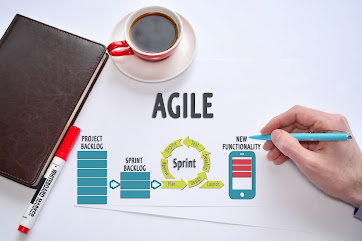Agile Product Development in Startups: A Guide to Getting Started
In the fast-paced world of
startups, the ability to adapt quickly and deliver products that meet customer
needs is crucial. Agile product development offers a flexible and efficient way
for startups to develop, test, and refine their products while staying
responsive to market demands. This guide will walk you through how to get
started with Agile product development in your startup.
What Is Agile Product
Development?
Agile
product development is a methodology that emphasizes iterative
progress, collaboration, and adaptability. Unlike traditional development
approaches, Agile breaks projects into smaller, manageable tasks known as
"sprints," which typically last 1-4 weeks. This allows teams to
continuously improve, make adjustments based on feedback, and quickly adapt to
changing requirements.
Why Agile Works Well for
Startups
- Flexibility: Startups often operate in
uncertain and rapidly changing environments. Agile enables them to adapt
quickly to new information or changes in market conditions.
- Faster Time-to-Market: Agile’s iterative
approach allows startups to release a minimum viable product (MVP)
quickly, gather feedback, and improve the product over time.
- Customer-Centric: Agile focuses on delivering
value to customers, making it easier to create products that meet real
needs.
- Resource Efficiency: Startups often have
limited resources. Agile helps prioritize tasks, ensuring the team works
on high-impact features.
Steps to Get Started with
Agile Product Development
1. Build a Cross-Functional
Team
Agile relies on collaboration
between team members with different skills. Form a cross-functional team that
includes developers, designers, product managers, and quality assurance
experts. This ensures that your team can handle every aspect of product development
without relying on external resources.
Tip: Keep the team small
(ideally 5-9 members) to maintain efficiency and ensure effective
communication.
2. Define the Product Vision
and Goals
Before diving into development,
it's essential to have a clear product vision. Define the problem your product
aims to solve, the target audience, and the unique value it offers.
Establishing clear goals will help guide the team’s efforts and keep everyone
aligned.
Tip: Create a simple
product vision statement to ensure everyone understands the product’s purpose.
3. Develop a Product Backlog
A product backlog is a
prioritized list of features, enhancements, bug fixes, and other tasks that
need to be completed. Start by brainstorming all the possible features and
tasks related to your product, then prioritize them based on their value and
impact.
Tip: Break down larger
tasks into smaller, manageable items to make them easier to complete within a
sprint.
4. Start with an MVP (Minimum
Viable Product)
Developing an MVP allows you to
release a basic version of your product that includes only the core features
needed to address your customers’ primary pain points. This approach enables
you to test your product in the market, gather feedback, and make improvements.
Tip: Focus on delivering
value with your MVP, and avoid the temptation to include unnecessary features.
5. Use Agile Frameworks (Scrum
or Kanban)
There are several Agile
frameworks you can choose from, but Scrum and Kanban are the most popular for
startups:
- Scrum: Involves working in time-boxed sprints
(usually 1-4 weeks) with daily stand-up meetings, sprint planning, and
sprint reviews.
- Kanban: Focuses on visualizing tasks on a
board and limiting work in progress (WIP) to maintain a steady workflow.
Tip: Choose the framework
that best suits your team’s work style and project requirements.
6. Hold Regular Stand-Up
Meetings
Daily stand-up meetings
(typically 15 minutes) help the team stay aligned and ensure everyone knows
what others are working on. Team members discuss what they did yesterday, what
they plan to do today, and any obstacles they’re facing.
Tip: Keep these meetings
short and focused to maintain productivity.
7. Conduct Sprint Reviews and
Retrospectives
At the end of each sprint, hold a
sprint review to showcase what was accomplished and gather feedback from
stakeholders. Follow this with a retrospective, where the team reflects on what
went well, what could be improved, and how to make the next sprint even better.
Tip: Use the feedback
gathered during these sessions to continuously improve your processes and
product.
8. Use Agile Tools to Manage
the Process
Agile tools help track progress,
manage tasks, and facilitate collaboration. Popular options include:
- Trello or Jira for task management
- Slack for communication
- Google Drive or Confluence for document
sharing
Tip: Choose tools that are
easy to use and fit your team’s needs.
Challenges to Watch Out For
- Resistance to Change: Some team members may be
reluctant to adopt Agile practices. Ensure they understand the benefits
and provide support during the transition.
- Overcomplicating Processes: Start with simple
Agile practices and gradually introduce more complexity as your team
becomes comfortable with the methodology.
- Lack of Communication: Effective communication
is crucial for Agile. Regularly check in with your team to ensure everyone
is on the same page.
Conclusion
Agile product development offers
startups a powerful way to build products that are adaptable, customer-centric,
and efficient. By following these steps, you can create an environment that
supports collaboration, continuous improvement, and rapid delivery. As you
iterate and learn from each sprint, you’ll find that Agile not only accelerates
product development but also fosters a culture of innovation and growth within
your startup.



Comments
Post a Comment